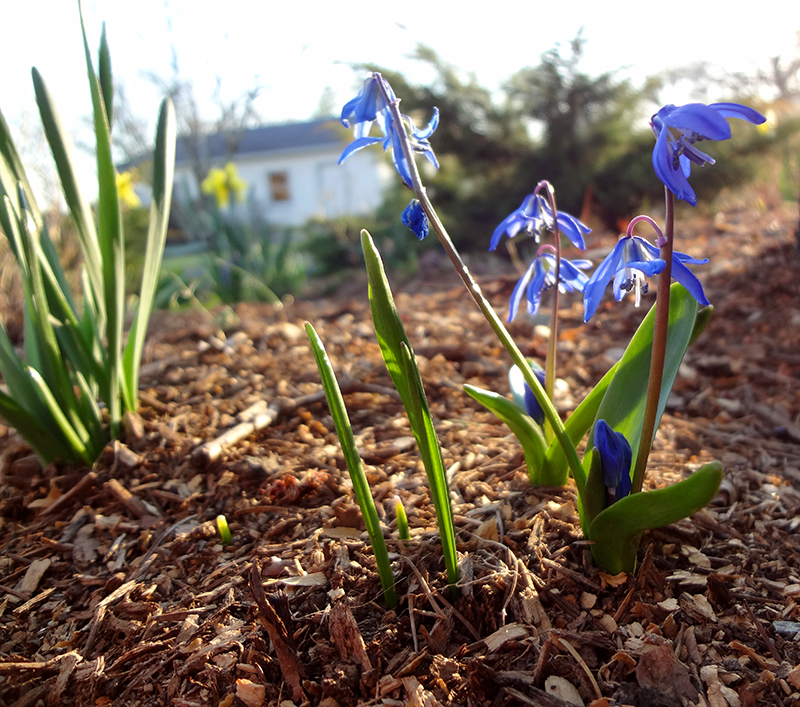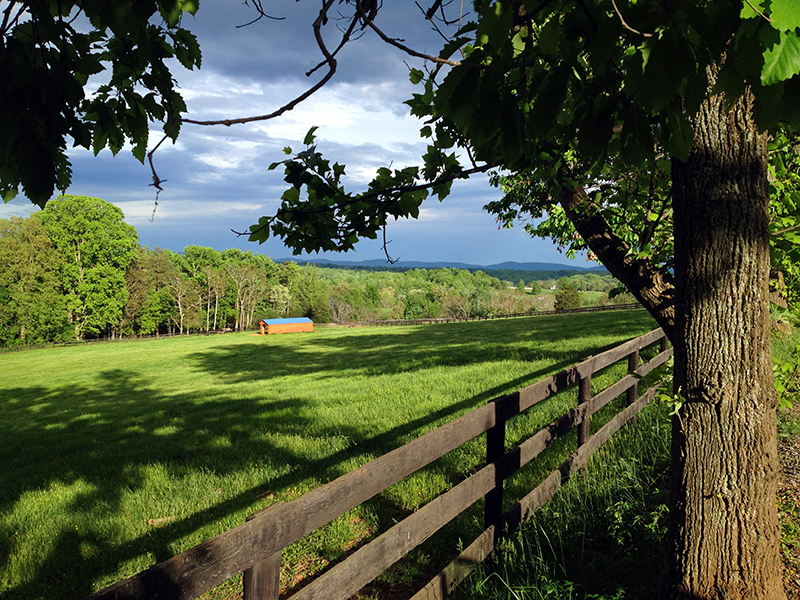May 12th, 2014 §
Last week most of my car trips included a chirping cardboard box riding shotgun. I delivered the chicks, which hatched in March, to their new owners. The little black pullet went to an acquaintance, a Wheaten Ameraucana pullet found a new and loving home with one of my Master Gardener friends, and the four Wheaten Ameraucana cockerels sold on CraigsList within an hour. Isn’t he handsome?
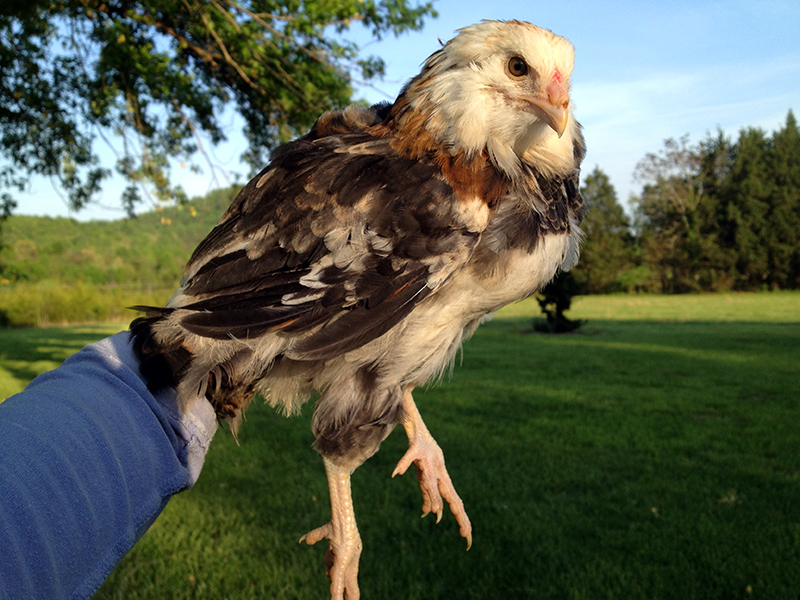
I kept two pullets. One is a pure Wheaten Ameraucana (in front below) and the other is a mystery hatched from a green egg out of a black mother! I love chickens at this age—about ten weeks—because they are sweet and curious, fully feathered but still small enough to pick up with one hand. They’re like little mini chicken pocket pets.
During the day I take the pullets out of their broody coop in the garage and put them in Tucker’s old puppy crate on the grass, and they eat their fill of clover, chickweed, whatever unfortunate bug comes along, and any grubs I unearth while digging in the garden. Last night they got to try pear for the first time.
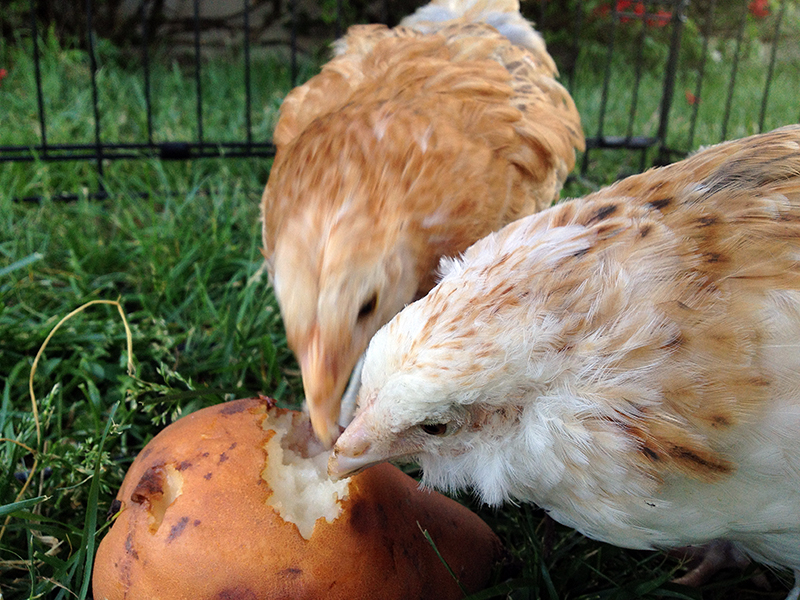
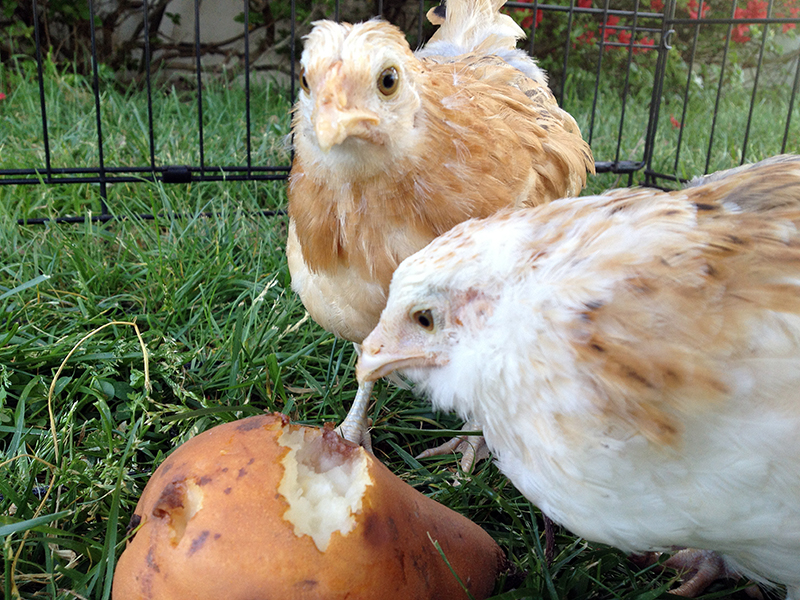
I am a bit sad that chick season is drawing to a close. If I could, I’d raise chickens all year long. I don’t think I will ever get tired of watching eggs turn into bright-eyed, beautiful birds.
Speaking of which, Mr. and Mrs. Bluebird are busy with their brood of four in the bluebird box. It’s wonderful to be back in bluebird season.
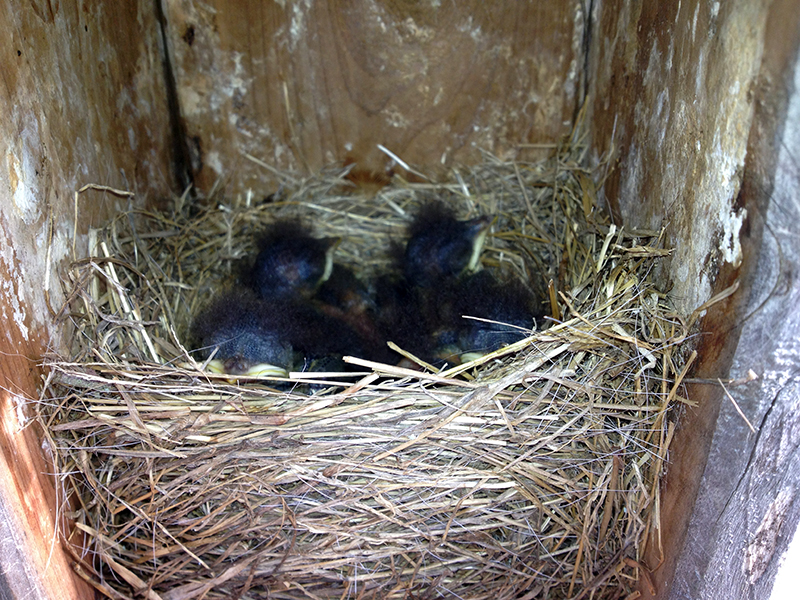
And finally, on a less joyful note, the feisty broody hen that hatched this latest batch of chicks wasn’t feisty enough when I returned her to the main flock. Despite holding her own for two days, on the eve of her third day back I found her with a quarter-size hole torn in the back of her skull. In her pain and panic to get away from her attackers she actually jumped into my arms from the nesting box. It’s the exact same wound Oregano sustained under similar circumstances, though this hen’s is worse.
She’s been getting daily Bactine spray and Neosporin plus Blue-Kote spray (which dyes her wound purple). I wish that I would have stitched her wound when I found it. She keeps knocking it open and it’s taking a very long time to heal, having to close from the outside in across basically her entire skull. In fact it’s larger now than it is in this photo, which I took a couple of weeks ago.
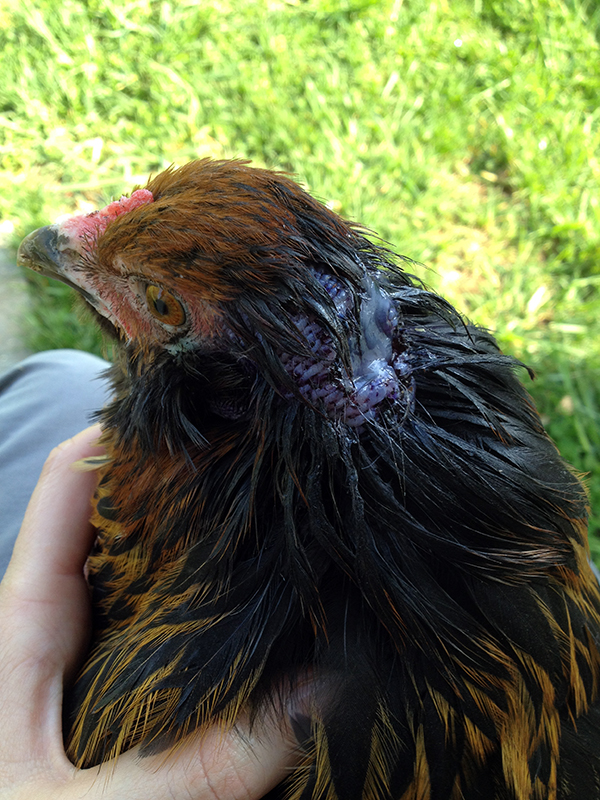
She doesn’t act hurt and has returned to laying eggs. As long as her wound doesn’t get infected I will just keep what I am doing and let it heal itself. My experience with Cora taught me that chickens can recover from the most dramatic wounds. This little hen is protected within another dog crate within the main coop, and will be until she heals and can successfully reintegrate with the flock.
This is what she gets for successfully raising the offspring of her sister flock mates. The injustice!
May 11th, 2014 §
May 10th, 2014 §
This cotton-candy confection of an insect is Rosy Maple Moth (Dryocampa rubicunda).
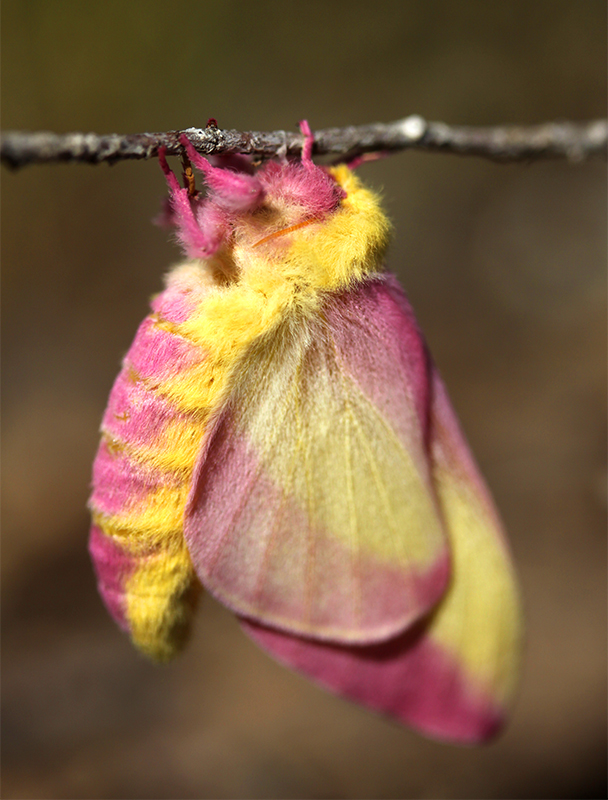
I found it, fittingly, on a maple tree in the front yard. Doesn’t even look real, does it?
May 9th, 2014 §
It’s been a long time since I’ve subjected myself, my dad and the house to any interior construction projects. But now there’s wood filler dust coating every surface, I’m tripping over drills and saws and sanders, and my kitchen has looked like this for a week:
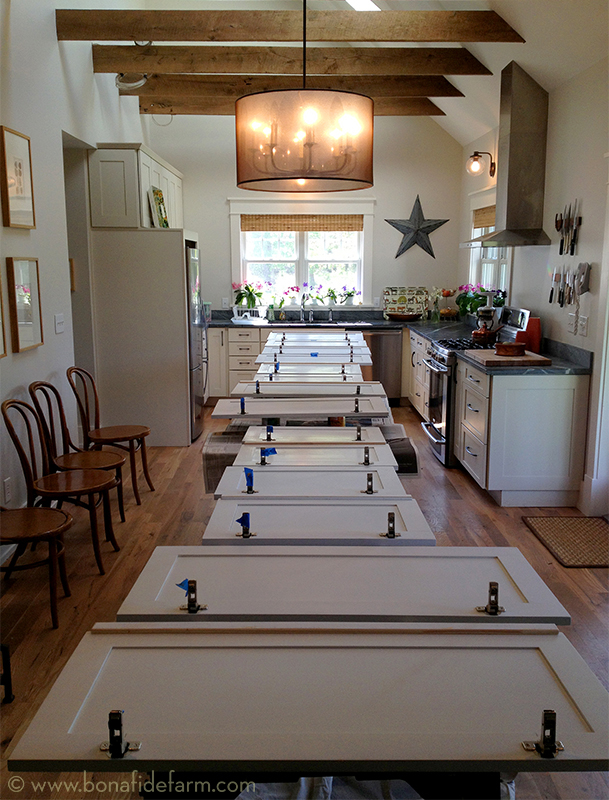
That’s 25 feet of good-time, fumey, oil painting fun, my friends. Stay tuned for the big reveal!
May 8th, 2014 §
The day I buy the vegetables that will be the year’s summer garden is always a happy day. The first smell of crushed tomato leaves jolts awake some deeply-buried, winter-weary brain synapses and floods my entire body with relief and joy. When the tomatoes come out, winter’s really over. We made it through another one.
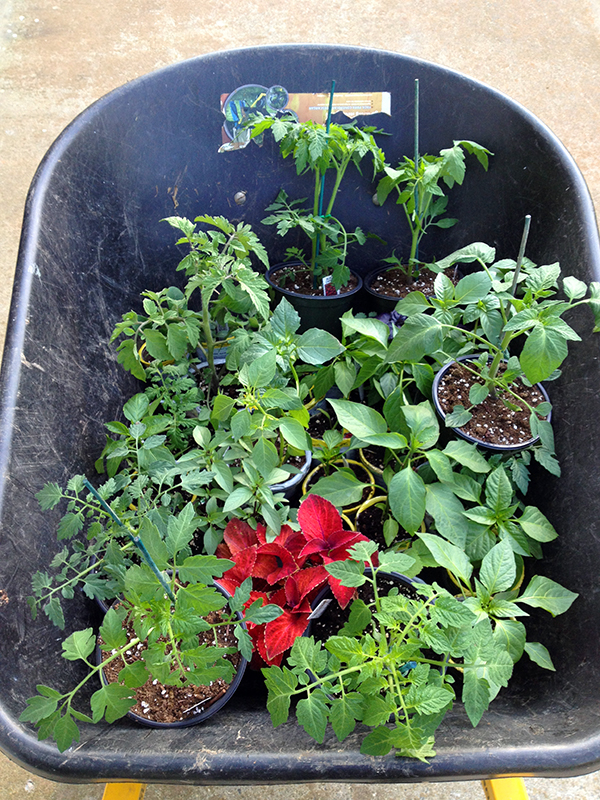
It’s hard to imagine it today when an entire garden’s worth of veg fits in the wheelbarrow, but in a couple of months these small plants will be pumping out enough produce to keep my family and me in good supply, with extra left over for freezing or friends.
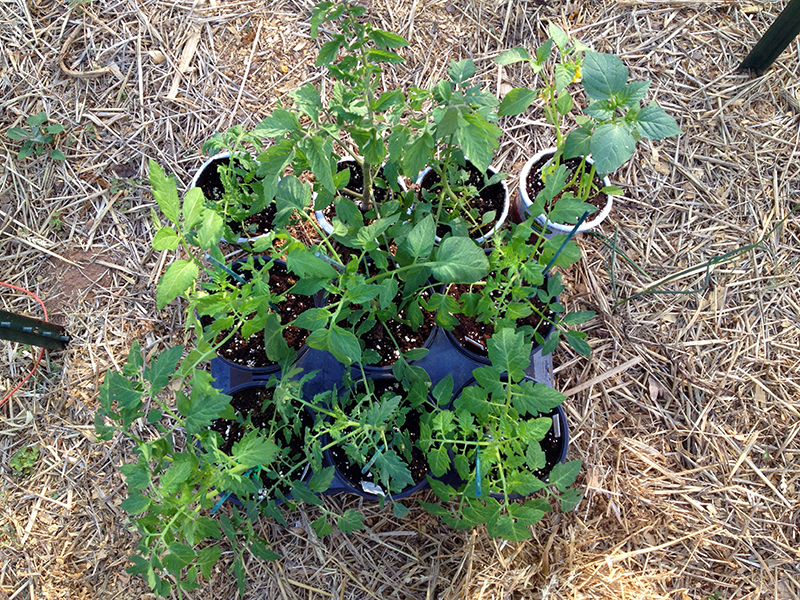
That is, of course, if I am lucky and smart in my battle against innumerable insects, diseases, and weather. Growing pesticide-free food, at least in central Virginia, is a nonstop intellectual challenge, a chess game of anticipation and reaction. It’s never easy, but I suppose that’s why I keep doing it.
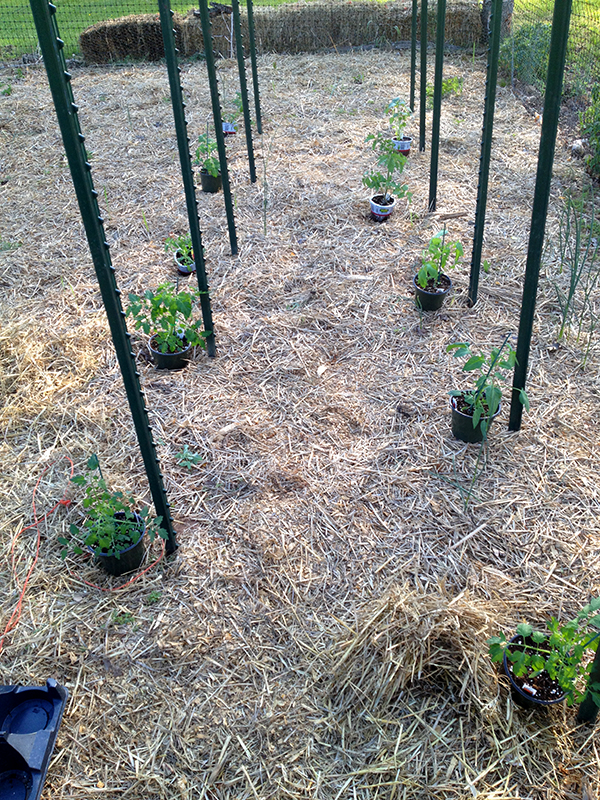
Let the games begin!
May 7th, 2014 §
It’s been at least two years since I’ve bushogged the two sections of my property that I let grow wild. A neighbor used to cut hay off of these fields, but I decided I preferred to let the fields grow up and become better habitat for birds and little mammals. And, I love the color and texture of the dried broom straw, and how it interacts with light to provide an interesting middle ground in my photographs.
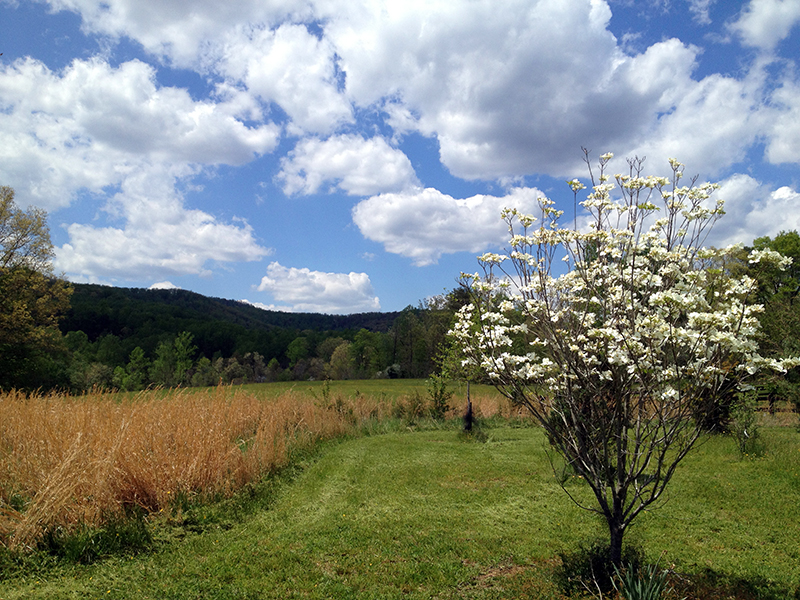
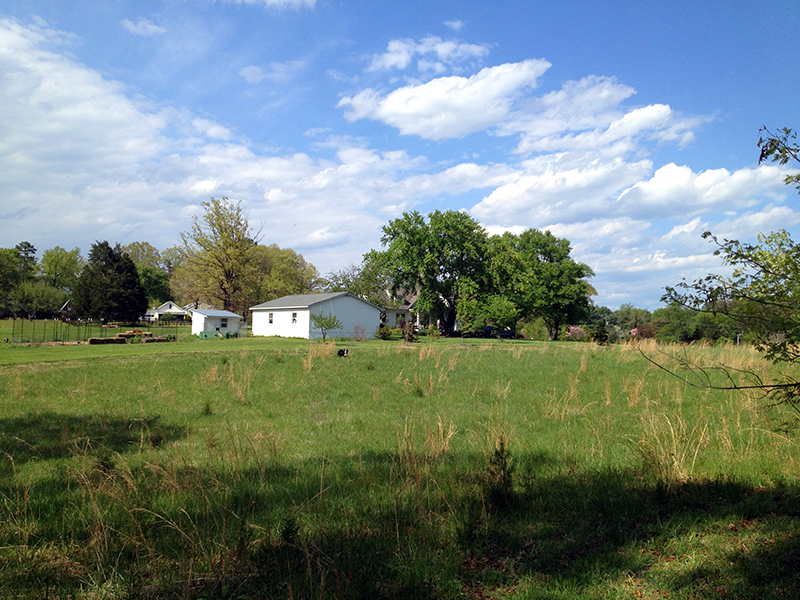
But landscape succession is an inescapable rule of nature, and in this part of the world open fields want to return to hardwood forest. The first pioneers are the brambles, and then come woodier plants such as native Eastern Red Cedars, sown by birds. There’s also some woody plant in the mix that resembles a quince in leaf shape and thorn, but doesn’t appear to flower.
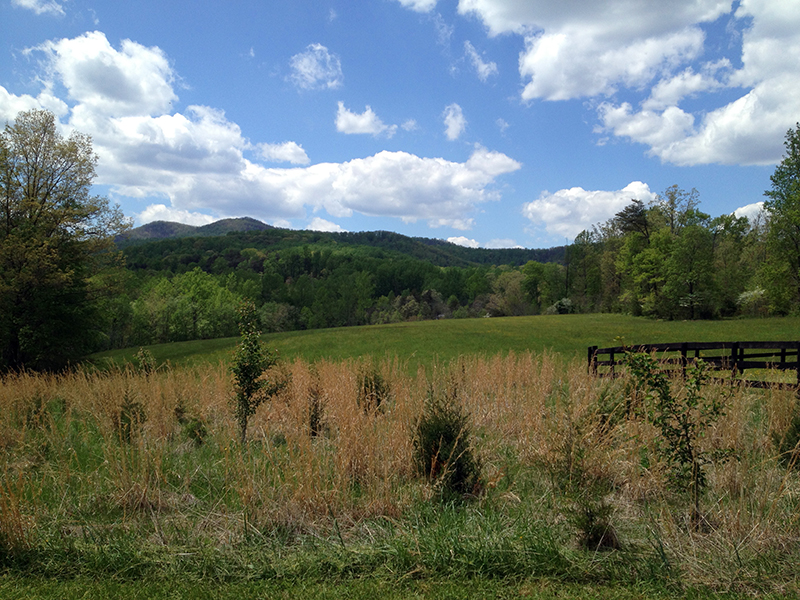
Without mowing, an open field will become an impenetrable thicket in just a few years. It’s a beautiful and fascinating natural process, but not one I want so close to home. Some day I may want to run livestock in these fields, and cutting out the woody growth while it’s still small beats trying to clear it when the plants are much larger and more established.
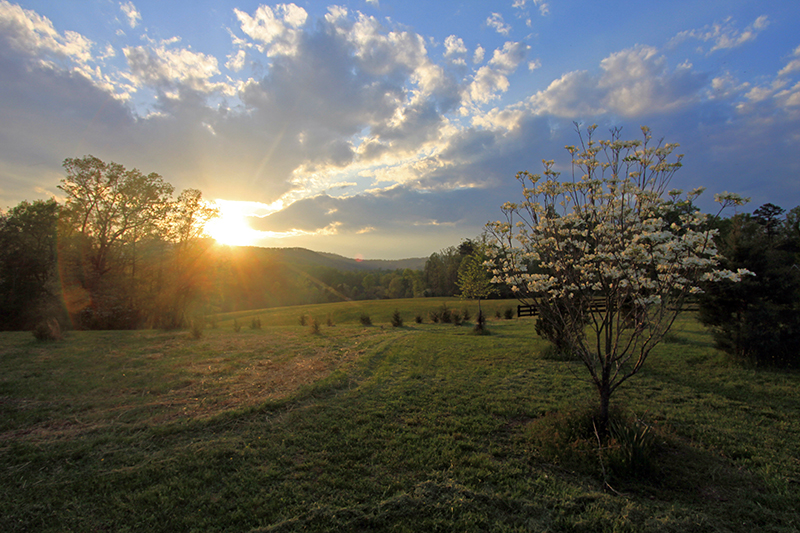
So last weekend I spent the afternoon bushogging. I left several of the small cedars standing in the back field, thinking they might turn into pretty pasture trees some day. They might also obscure my mountain view, so they may come out further down the road. If I didn’t want to preserve the view I’d let as many as possible grow to create a windbreak to protect the north side of the house from the crazy-strong winds that scream down this valley.
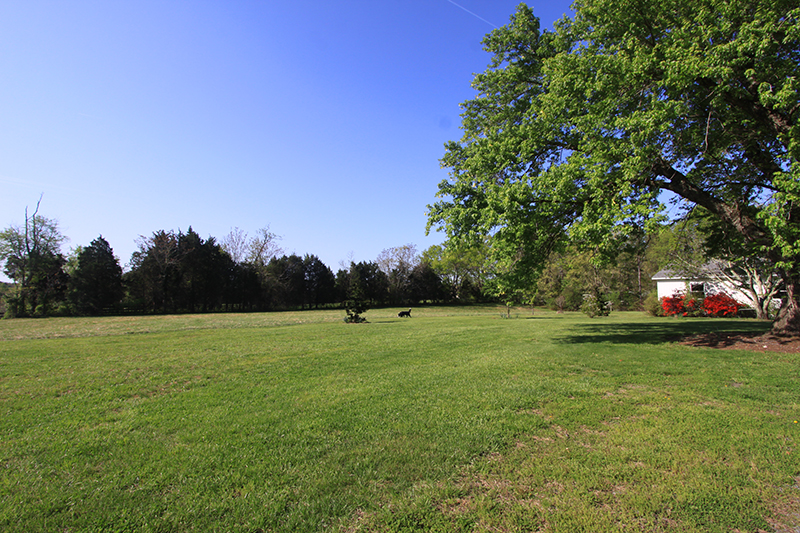
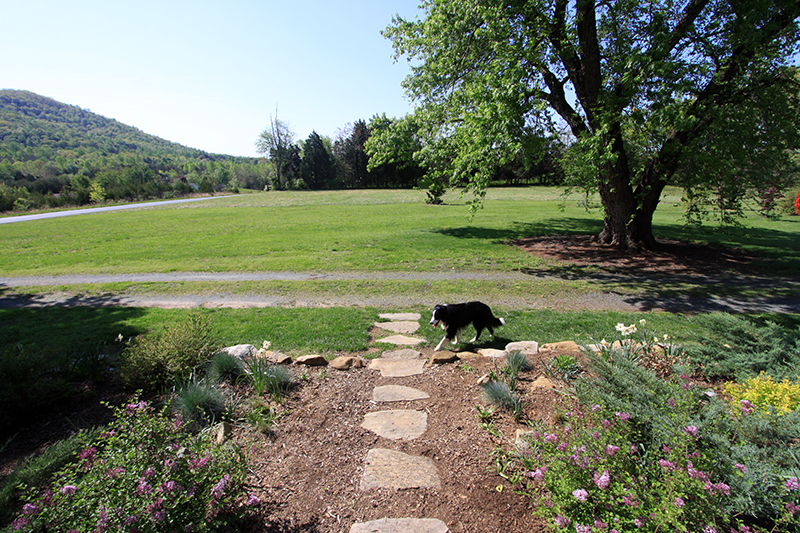
It’s interesting to me how much cutting these fields changes the landscape around the house. Although mown fields look neater and tidier, I prefer the added visual interest of the uncut fields. I guess the good thing is it’s just grass, and it will grow back soon.
May 1st, 2014 §
The overwintered ‘Red Russian’ kale has been a real treat this spring—sweet, tender and delicious. Unfortunately it’s already begun to bolt (go to seed), which means that the kale will gradually get tougher and more bitter as its energy goes into reproduction.
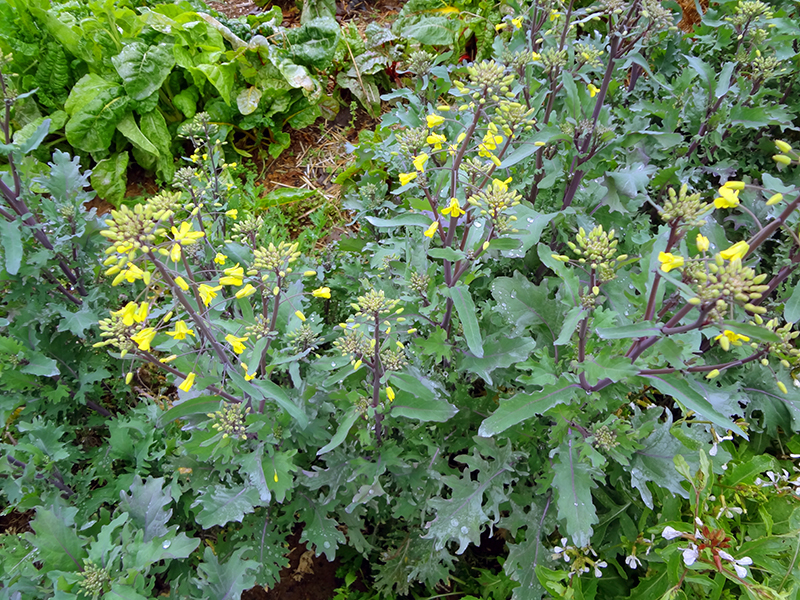
I’ve been harvesting kale almost every day, and the other night I cut off the flower heads to try to slow the bolting process. I nibbled on some of the flower heads and found them delicious. Further down the stem was edible and tasty as well, with a texture like very thin asparagus.
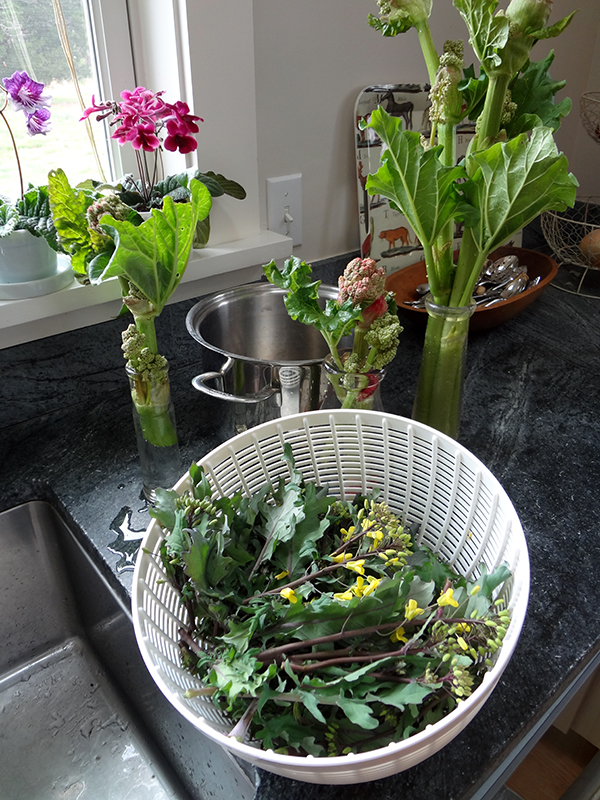
I washed the flowering heads and gave them a rough chop. They went into a saute pan with olive oil, a clove of chopped garlic, and a few golden raisins. A few seconds on high heat cooked them to perfection, just wilted through but still vibrant, healthful green.
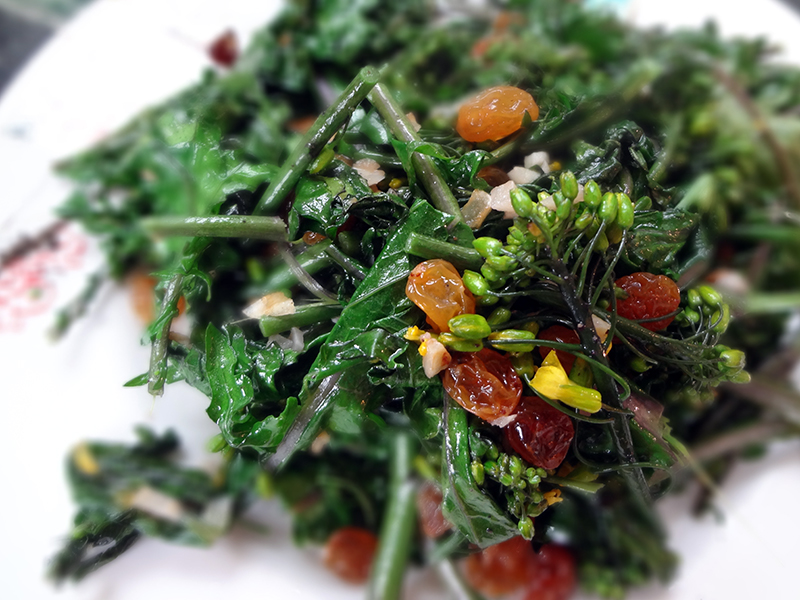
I’m pretty sure that as the season goes on these flowering heads won’t be nearly as delicious, but if you can catch them in these first days of spring you’ll enjoy an unusual treat.
April 30th, 2014 §
It’s rained for three days and nights, downpours and thunderstorms, and it feels as though this little pocket of central Virginia has become Seattle. The mists lift and drop, playing peek-a-boo with the mountains, and all the new spring greenery is positively glowing in the excess moisture.
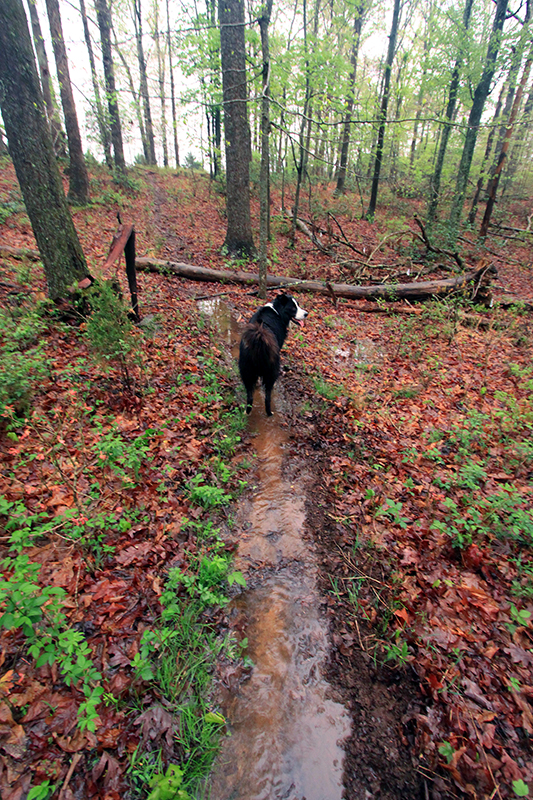
I took a short walk through the woods behind the house this evening, and discovered that Tucker’s trail has become, much to his delight, a creek. My Labrador in sheepdog’s clothing is thrilled that the stream has somehow migrated up the hill to within his reach. He zooms along it, mud flying everywhere. It’s so fun to watch his joy in the water that I can’t even be mad at how filthy he’s getting.
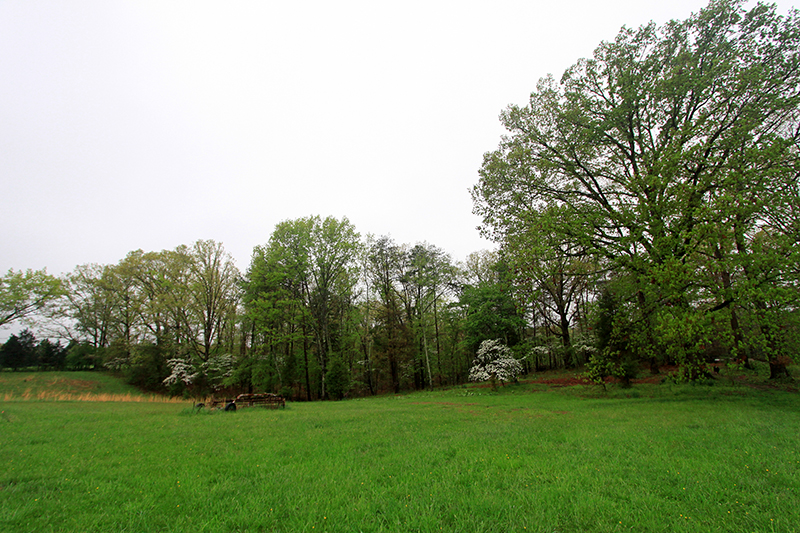
The woods are laced with our native dogwood, state tree of Virginia, and they look spectacular this year. It’s next to impossible to get a good shot of them in the woods, but in person they are stunning—ethereal white blossoms threaded through the entire forest. And look at that grass—technicolor! Methinks I will have the season’s first date with the mower this weekend, if the ground dries out enough to get on it with a big machine.
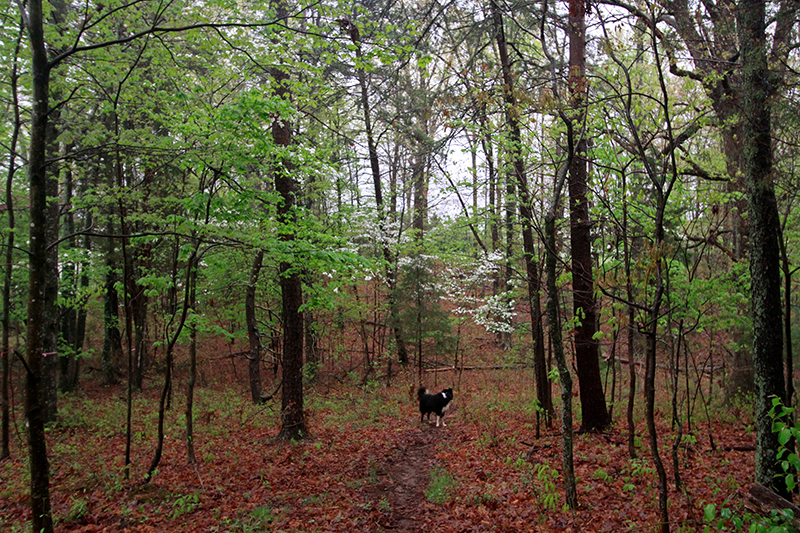
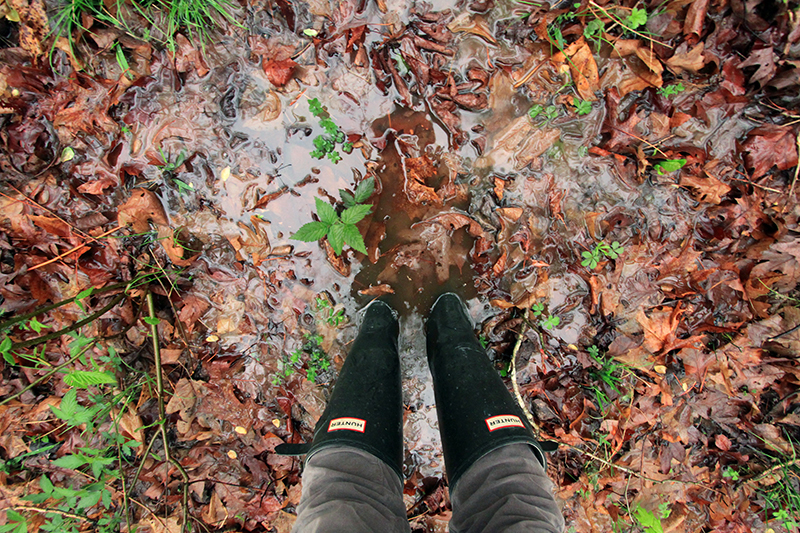
The middle of the woods, where it’s usually just dry forest duff, is now full of little ponds—this one deep enough to swallow my feet!
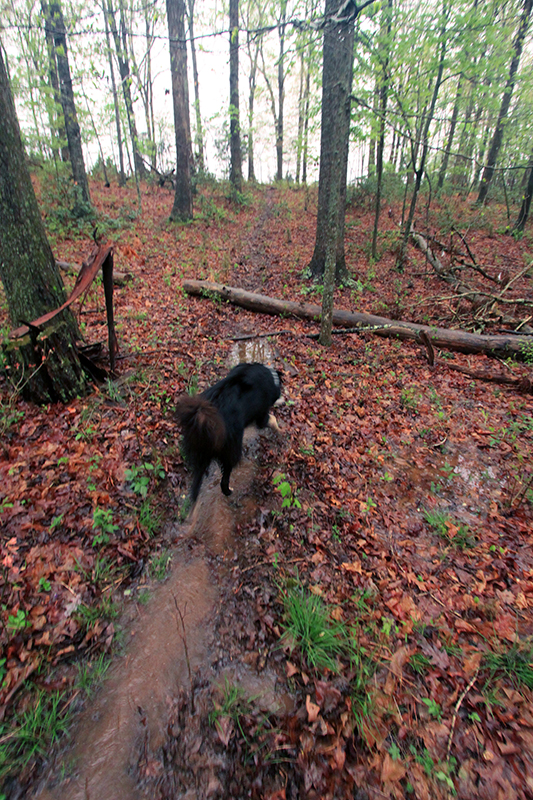
I can’t understand why the water collects as it does here, instead of continuing to run down the hill to the creek. A mystery I’ll never solve.
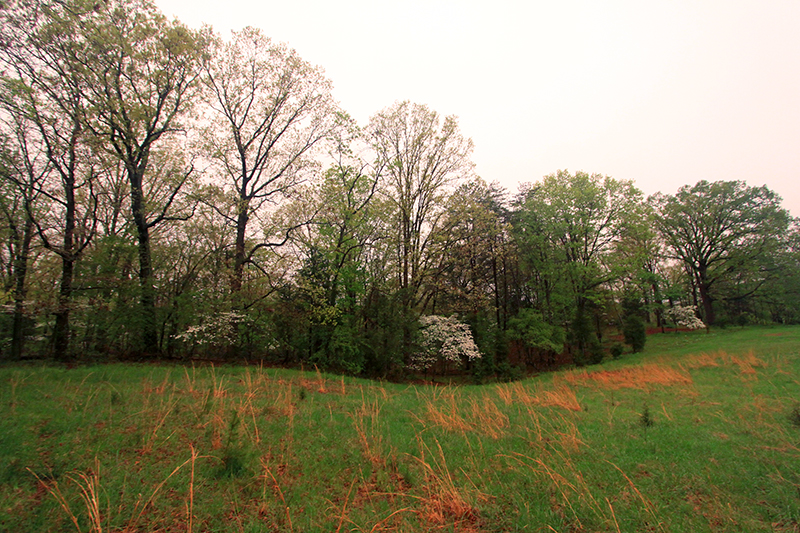
More dogwoods at the wood line, with the big oaks just leafing out above them. I love the gentle curves of this piece of ground. They remind me that I am lucky enough to live in the foothills of the Blue Ridge mountains.
April 29th, 2014 §
I was away from the farm for 16 days in April, and when I returned last week it was to a different world than I’d left. I completely missed the flowering of the earliest ornamental trees, the cherries and crabapples, but the dogwoods are in full bloom. The spring continues the cool and damp weather pattern of the winter, which is actually nice as the low temperatures keep the blooms around much longer than they do during springs that shoot right to 85 degrees and stay there.
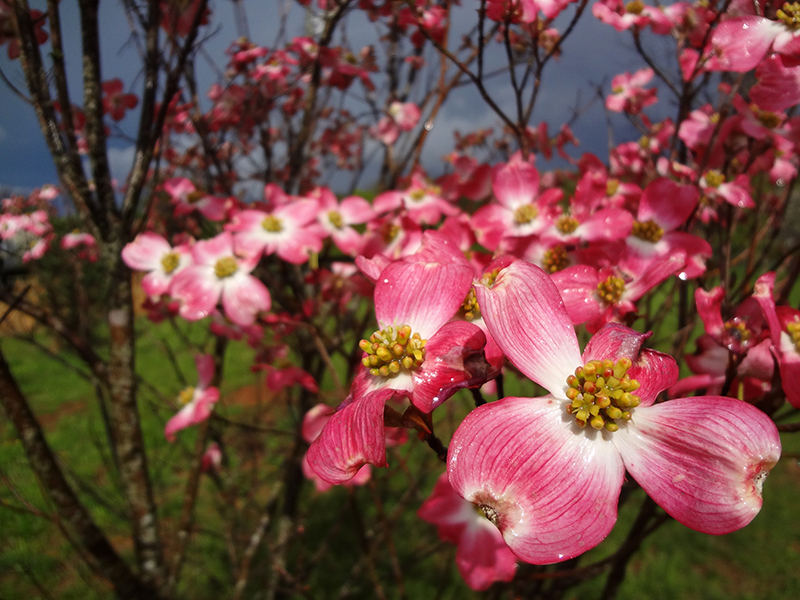 Dogwood ‘Cherokee Brave’
Dogwood ‘Cherokee Brave’
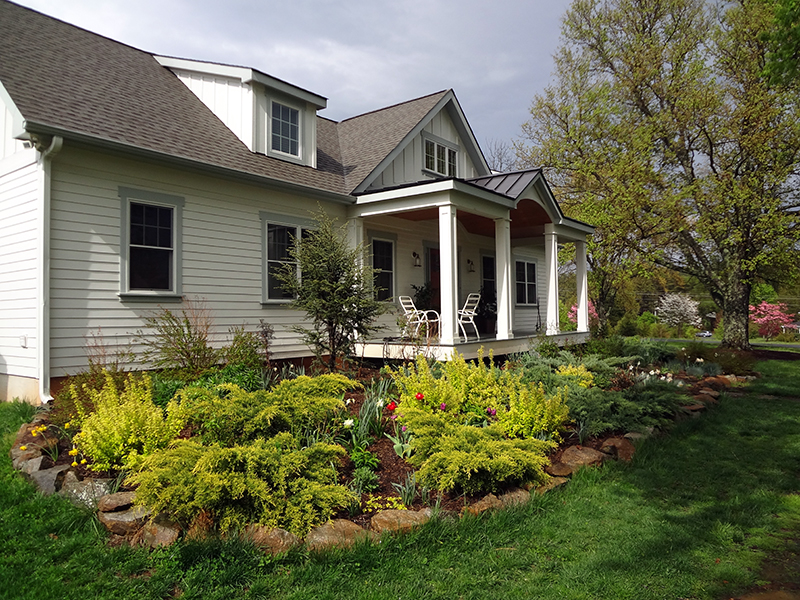
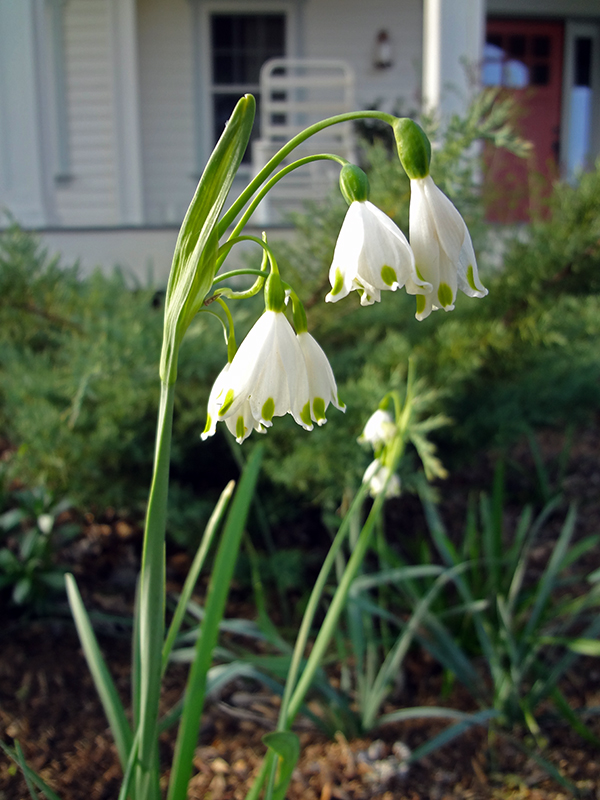 Leucojum aestivum ‘Gravetye Giant’
Leucojum aestivum ‘Gravetye Giant’
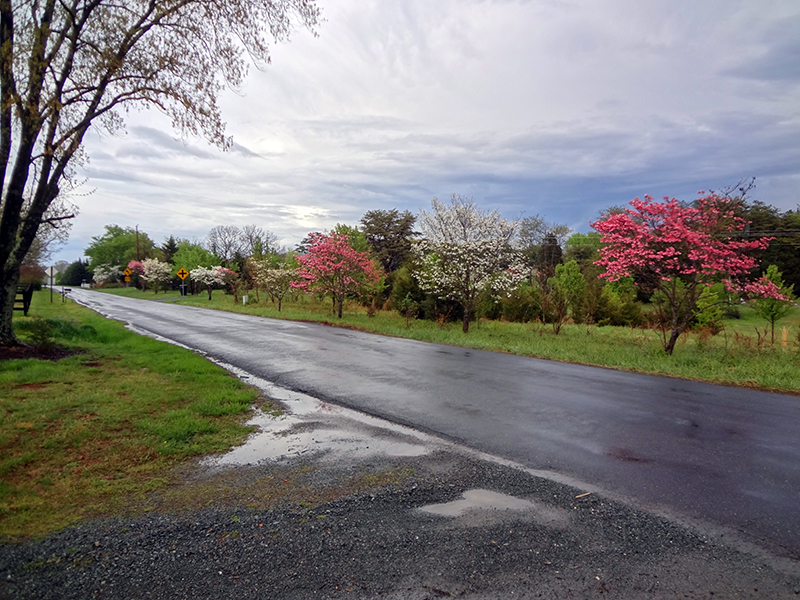
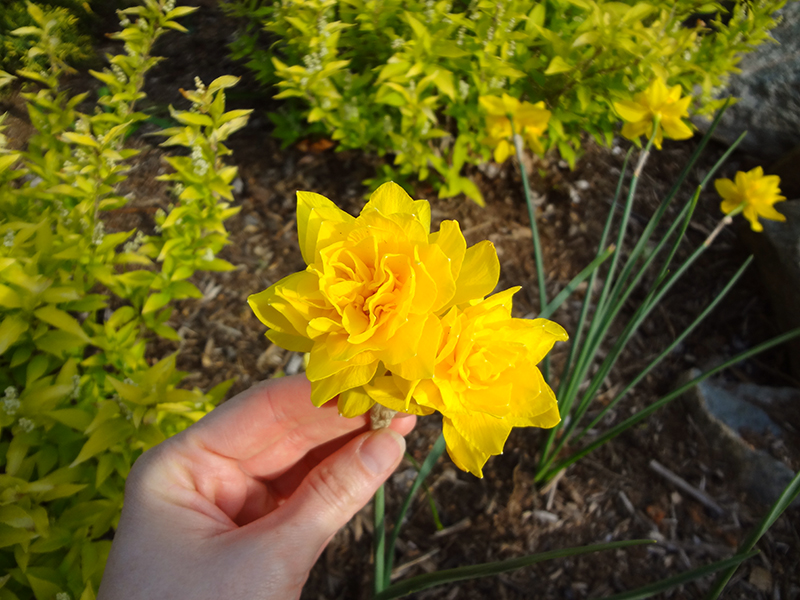 Narcissus ‘Rip van Winkle’
Narcissus ‘Rip van Winkle’
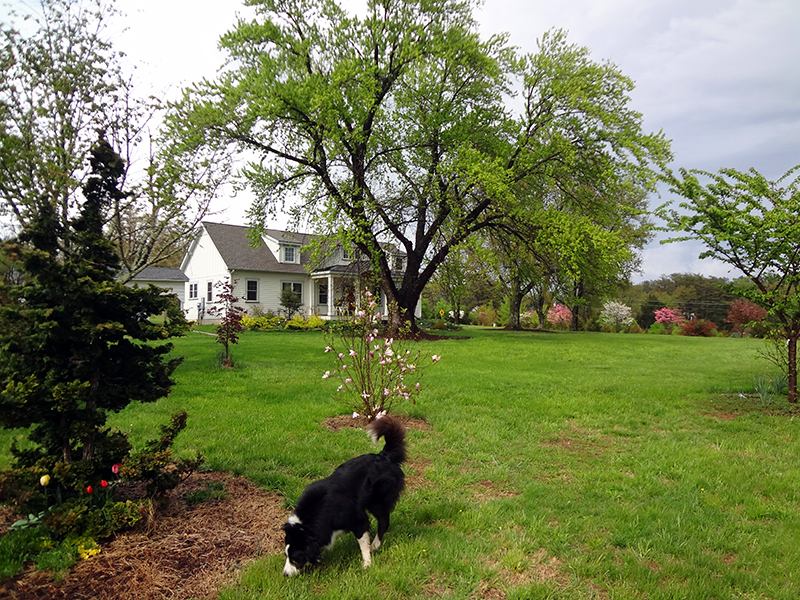 Magnolia ‘Jane’ (right behind Tuck)
Magnolia ‘Jane’ (right behind Tuck)
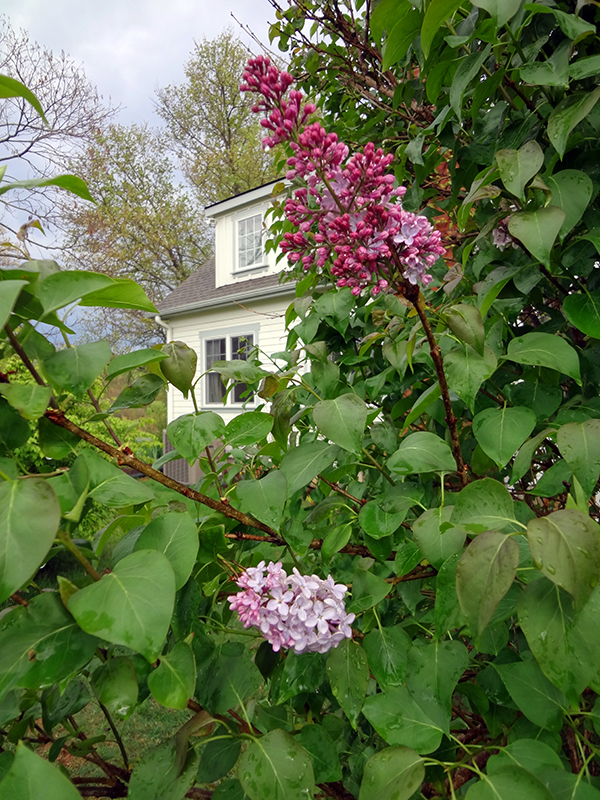 Homestead lilac
Homestead lilac
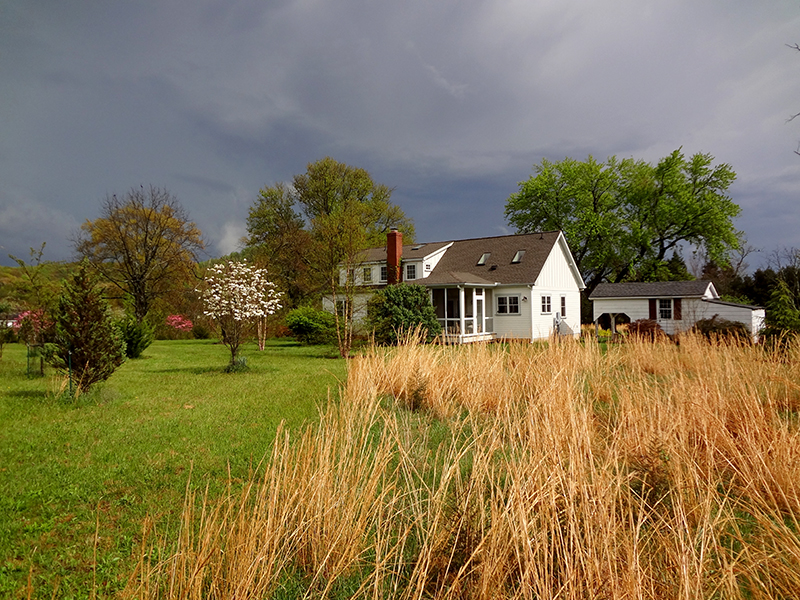
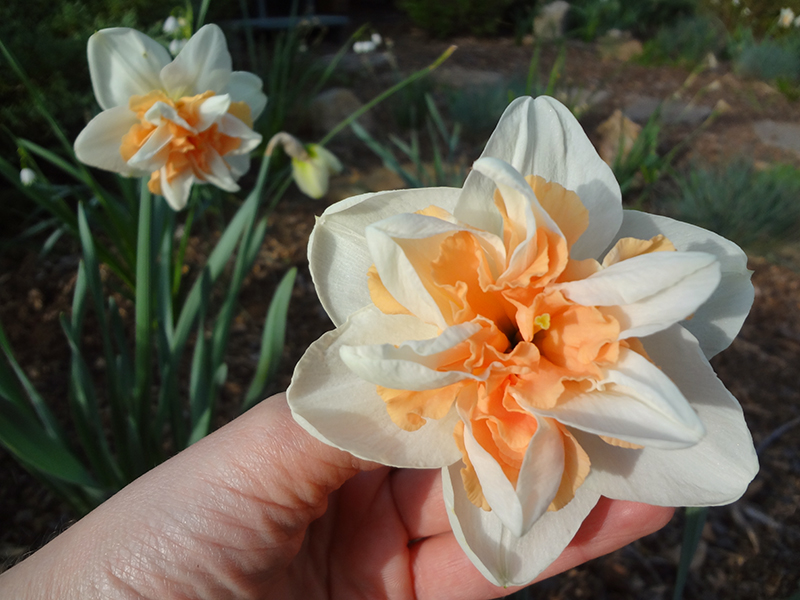
Narcissus ‘Delnashaugh’ is definitely my favorite of the bulbs added last fall—a wonderful coral/apricot color and huge blooms. Daffodils are up there in my top three flowers—my dream is to have great fields full of naturalized drifts, and then a whole other specimen collection for up-close appreciation. The bulbs I added to the front garden last fall are a good start toward this plan.
After such a long, cold, and snowy winter, I am especially appreciative of these spring blooms. I am not, however, especially looking forward to grass-mowing season, which is already underway!
April 28th, 2014 §
This marks my 500th post on the Bonafide Blog, and as I’ve crept up upon this day I’ve been thinking about the role this blog, and the farm, have played in my creative life.
When I was young I wanted to be an artist, and chose photography as my medium. But making art was hard, and it came at great personal cost as I struggled to find my footing on the ever-heaving icebergs of inspiration, on-demand creative output, and madness. Eventually I traded the stress of artmaking for the relatively stable ground of what I believed was a less art-filled, more art-less, life. I stopped hauling huge cameras around, quit stressing about missing some perfect shot, and started to live my experiences without the filter of a lens and my unreasonable expectation to make every moment into “art.”
Releasing my identity as a photographer was probably a healthy decision, but over the last dozen or so years my creative output declined to the point where I no longer believed I was a creative person, with nothing to contribute to the big worlds of photography, art and writing.
Then, four and a half years ago, came the farm and an unpremeditated decision to write about building a house, just to have a personal journal of the project. Yet even after beginning the blog I mourned what I perceived as my continued creative death. I still wasn’t “making art,” and I viewed what had been an integral part of my life as an atrophied limb, never to regain function.
But when I look back over these 500 posts, I see that most of them are about things I have made, taught myself, or found fascinating. I realize that instead of disappearing, my creativity just broadened, deepened, and diversified. It only felt like it was missing because it was everywhere. Instead of being about a conscious, intense, and usually stressful decision to sit down and “make art,” art has simply been diffused into just about every aspect of my life.
I have the farm to thank for this expansion of my creativity. This homestead is a safe and healthful incubator for ideas and a laboratory for me to learn, experiment, mess up, feel inspiration, accomplishment and limitation. No, I don’t have any new photos framed and hanging on the wall, but I do have hundreds of stories and thousands of images, right here on this blog, chronicling the creation of my life on this farm.
So here’s to 500 posts, and realizing that what you had wasn’t gone at all. It just became so large as to be invisible, growing huge and all-encompassing in a quiet and most beautiful way.
